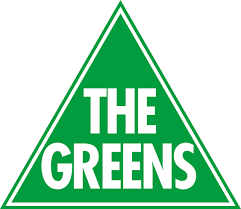 Analysis by Jeremy Phillips-Yelland and Aisling Acton
Analysis by Jeremy Phillips-Yelland and Aisling Acton
Words by Matilda Finn
Last Saturday’s Victorian election arrived with as much media hype as its federal counterpart in May.
The campaign centred on Premier Daniel Andrews, whose personality has been debated at dinner tables, on Sky News and in the tabloids for more than two years.
His sweeping win and uniform swings in some areas of the state suggest that most Victorians knew which box they were ticking well before the election campaign begun.
Despite the surge of Greens candidates in the inner-city, a fresh wave of independents, and the best efforts of the struggling Victorian Liberals, the Andrews’ government secured another strong majority, suggesting that most voters don’t see the Premier as “Dictator Dan” but rather, as Labor’s election material would have you believe, a leader who “does what matters”.
Since the weekend, factions in both major political parties have started negotiating over ministeries, shadow ministeries and political prizes.
This process will be messier than usual, given counting in some electorates continues, and several AWU-aligned MPs and ministers have left the Right faction to join the Premier’s Socialist Left faction. However, as those dynamics land, the election result that means Victoria will likely be under the jurisdiction of two commanding Labor governments for at least the next three years. And it is a result that suggests some of the trends we saw at the federal election might be here to stay.
While the outcome of the Victorian election was obvious within hours of polls closing on Saturday night, what it means for your organisation is less clear.
Our team has worked through the key seats and battlegrounds to provide guidance on what the results will mean for you as the Andrews government begins a third term in office.
The Liberals continue to be no one’s Guy

There were swings in favour of the Liberals in outer Melbourne, including in Broadmeadows, Clarinda, Greenvale, Mill Park, St Albans and Sydenham.
But none of these gains resulted in Matthew Guy securing these seats, so this glimmer of light in growth corridors was insignificant given how the rest of the numbers fell.
The Liberals are licking their wounds after registering their lowest share of the primary vote in 70 years, and after losing more electoral support and ultimately more contests in Melbourne’s east than ever before.
Commentators have quickly called out the party’s inability to connect with voters, particularly young, professional women, an issue that also plagued them at the federal election.
It is also clear that they made a key strategic error by centring the Premier in their attack messages, instead of presenting positive and alternative visions on issues like debt, a struggling health network, and sky-high energy prices.
One silver lining for the Liberals is that the teal independents didn’t repeat their federal election success. In Hawthorn, well-reputed Liberal John Pesutto has defeated independent Melissa Lowe in Hawthorn to re-enter parliament.
With Matthew Guy stepping away as Liberal leader alongside party director Sam McQuestin, Pessuto will go up against Berwick MP Brad Battin for the party leadership on Thursday, December 8. Given the state this election has left the Liberals in, it’s no wonder that former federal MPs Josh Frydenberg and Tim Wilson are rumoured to be considering political comebacks.
A “Green wave”?

Re-elected Greens member for Melbourne, Ellen Sandell, called this election a “Green wave” on the ABC within hours of polls closing.
There were obvious early swings to the Greens in inner-city seats, including Footscray, Northcote, and Pascoe Vale, and the party also strengthened its grip on Melbourne, Brunswick and Prahran.
At the time of writing, Preston remains too close to call, but it is a fight between Labor and independent Gaetano Greco after an initial swing to the Greens did not eventuate.
As counting continues, an increased share of the vote looks set to deliver only one additional seat in the lower house, with Greens candidate Gabrielle de Vietri having won in Richmond, previously a Labor seat for over a century.
While what Greens leader Samantha Ratnam coined a ‘Green slide’ hasn’t quite eventuated, the swings they have seen in some inner-city seats, and the Liberals’ choice to preference them above Labor in these target areas, will be something Labor’s campaign team must account for at the next election if they want to regain ground.
Regions produce a strong harvest for the Nationals
There were notable swings to the Nationals and One Nation in regional Victoria.
In the Gippsland seat of Morwell, there was a significant swing away from the government, with Labor’s Kate Maxfield losing a notionally Labor seat to Nationals challenger Martin Cameron.
Similarly, there was a swing against independent Suzanna Sheed in Shepparton, which has been claimed by Nationals candidate Kim O’Keefe.
 Given these results, there is potentially more pressure on Labor to deliver a successful Commonwealth Games in Shepparton and Gippsland in March 2026.
Given these results, there is potentially more pressure on Labor to deliver a successful Commonwealth Games in Shepparton and Gippsland in March 2026.
A failure to handle some of critical infrastructure and workforce challenges ahead of the Games could create issues for the government in November of the same year – but equally the increased investment and boost to tourism could narrow the margin in these areas in the government’s favour.
What does this mean for you?
1. The time to move is now if you need co-investment
Speaking to the media the day after his victory, Andrews declared his intent to not waste a moment, saying the result would allow him to “get on and do the work.”
If your organisation has stakeholders in both the federal and state spheres, you can set up for the decade to come by capitalising on Labor’s incumbency on Spring Street, and in the Lodge.
There will be opportunities for your organisation to lead the conversation, bring like-minded state and federal members to the table, and guide co-investment in projects that benefit you, and both Labor governments.
2. Do your organisations priorities align with the governments?
Organisations that are currently servicing a problem area for these governments will have an advantage.
Energy and healthcare will remain key issues in Victoria and Canberra.
Victorian Labor’s focus on energy policy and renewable sources as a core component of their platform has been clear since the establishment of the Solar Homes program in 2018, and they have further elevated this with their commitment to bring back the State Electricity Commision and enshrine state ownership in the constitution.
Strain on the acute healthcare system has been front of mind for media and voters, but as the government looks towards the next four years there are additional questions around how the role of primary care can be elevated and access to services improved.
It’s also worth noting that the upper house in Victoria will likely have more crossbench members than ever before so ensuring your objectives are aligned with those stakeholders will be important in this term of government as ministers seek to navigate their legislative agenda through those that sit on the red leather.
3. Funding
All governments are facing debilitating budget deficits because of COVID-19 and the war in Ukraine, which means it’s unlikely there will be many more large spending announcements in healthcare or infrastructure.
In this economic climate, businesses should focus on any service or opportunity they can offer government that covers multiple priority areas at once, like education, job creation, and access to healthcare. Organisations who can strategically offer savings to government will be given priority.
4. Workforce shortages
All levels of government are facing challenges presented by workforce shortages.
When engaging with decision makers, you’re more likely to cut through if you can provide solutions on how to staff your project.
You should also demonstrate how your project will help to solve workforce shortages. For example, a healthcare organisation should emphasise how effective primary care can reduce the strain on tertiary-level healthcare staff.
Where to next?
Based on this election result, our eyes will be keenly fixed on the NSW election in March 2023 as the next litmus test of some of the trends we’ve seen in 2022. At this stage, our prediction is a Labor win.
There, we will be able to see if the major parties continue to bleed votes to progressive independents and minor parties, and assess whether this might become an enduring trend in Australian politics.
If you’re interested in discussing policy and government relations in more depth, don’t hesitate to get in touch to see how Banksia Strategic Partners can assist you.



